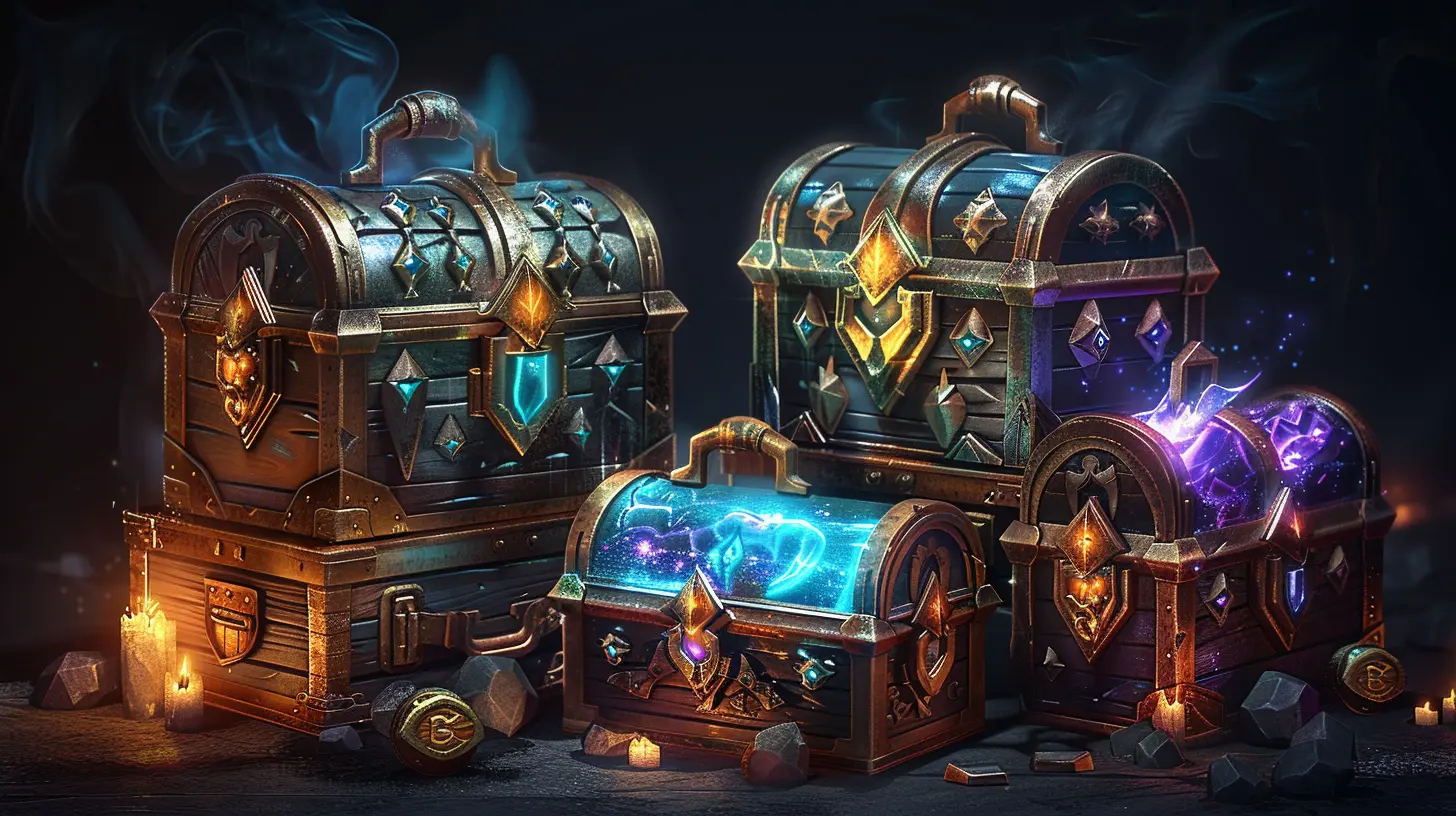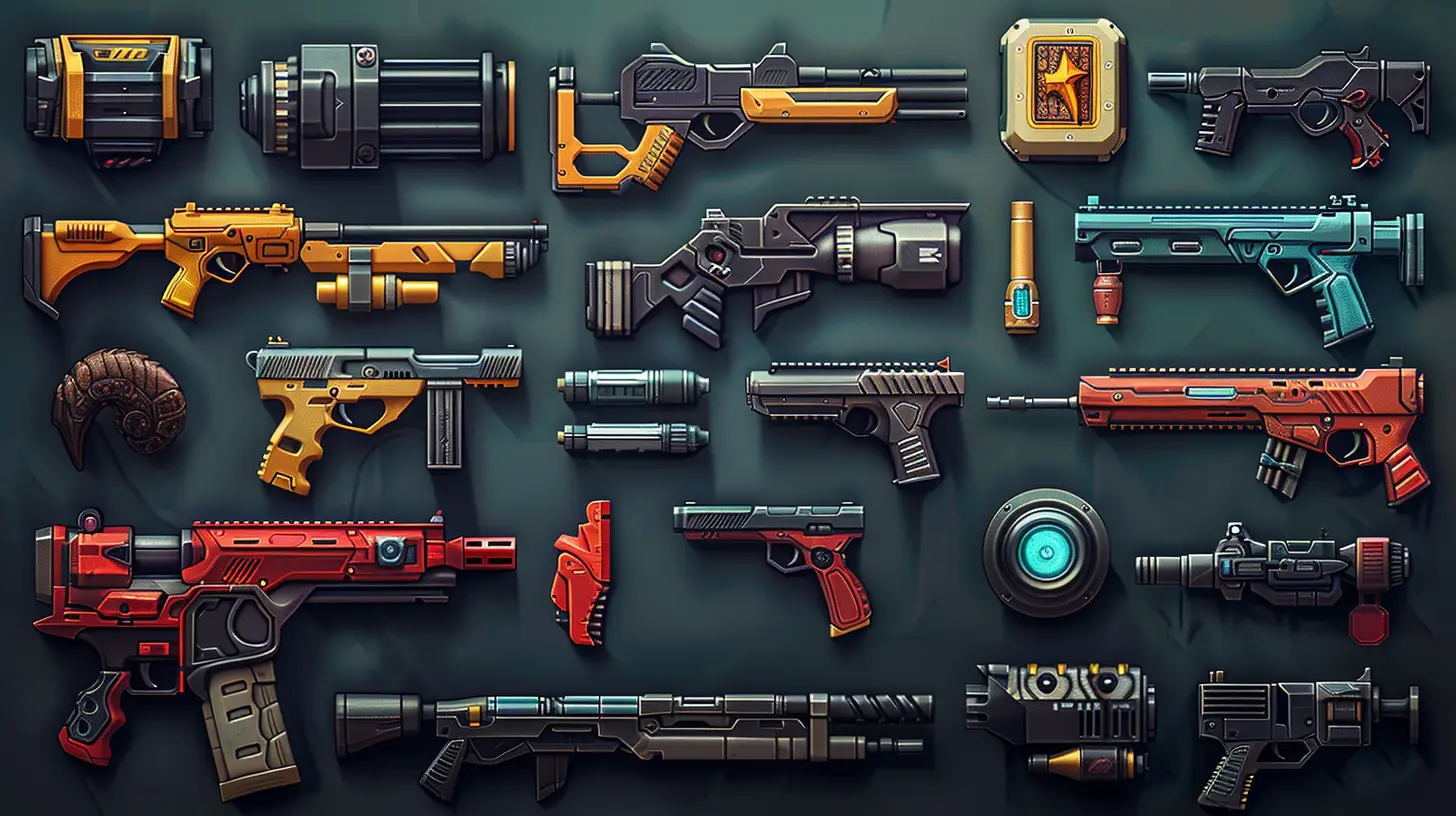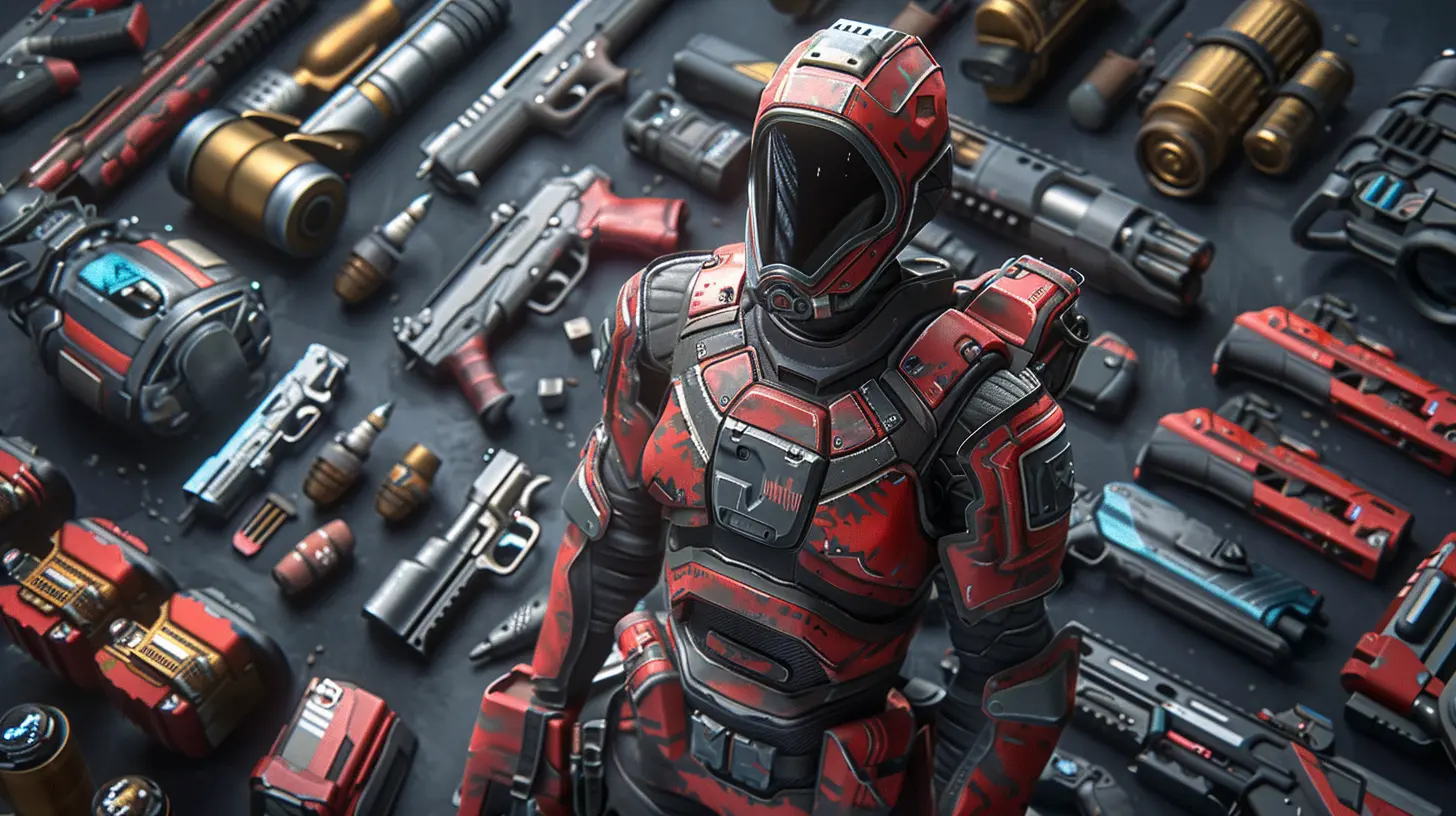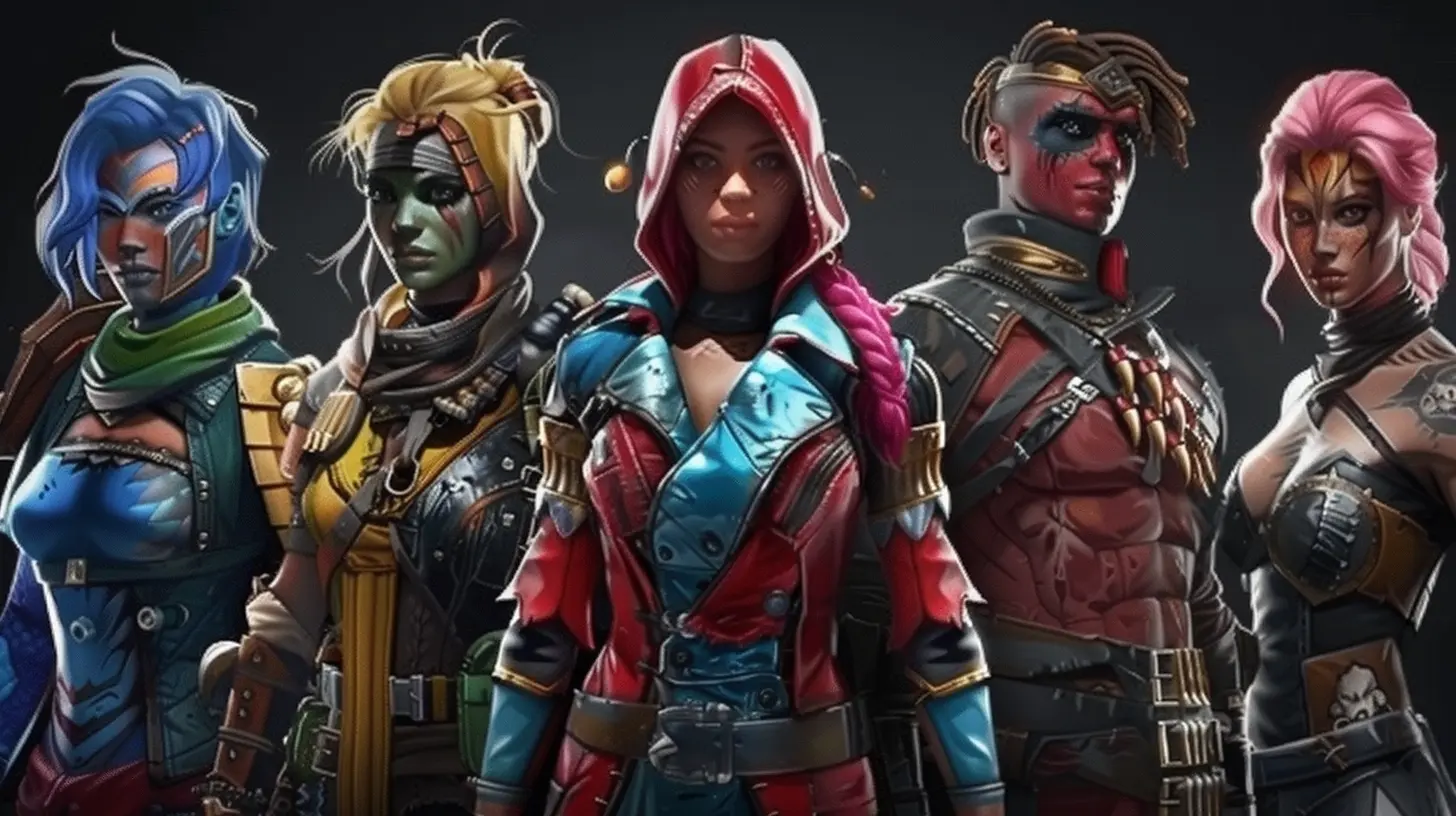From Cosmetic Skins to Functional Upgrades: How In-Game Purchases Diversify
28 June 2025
Let’s be real for a second—video games aren’t just games anymore. They’re digital playgrounds, epic adventures, and social hubs rolled into one. And if you're anything like me, you've probably dropped a few bucks on that slick new skin or that powerful weapon upgrade that just had to be part of your arsenal.
But have you ever stopped and thought about how far in-game purchases have come? Once upon a time, buying a new outfit for your character was a fun but totally vanity-driven move. Now, in-game purchases have evolved into a whole ecosystem—cosmetic skins, battle passes, quality-of-life upgrades, and even full-on gameplay advantages.
So grab your gamer headset, settle in, and let’s break it all down. Here’s how spending in games has gone from just looking good to actually changing how we play.
The Evolution of In-Game Purchases
The Birth of Cosmetic Culture
Let’s travel back in time—the era when loot boxes were like little digital piñatas and everyone chased that sweet, sweet golden skin. Cosmetic items were the OG of in-game purchases. They didn’t add any gameplay advantage, but they sure made your character look cooler than your buddy's.Whether it was a flaming sword in World of Warcraft or a banana suit in Fortnite, cosmetics became a way to show off your style and sometimes, your wallet. And even if you weren’t a great player? Hey, at least you could look fabulous while getting owned.
Cosmetics were (and still are) harmless fun—purely visual changes that let players personalize their avatars. They’re like fashion for pixels.
The Rise of the Battle Pass
Just when we thought loot boxes were the pinnacle of monetization, along came the battle pass. It was like a subscription meets a reward ladder, giving players regular stuff to unlock as they played.The best part? You didn’t always have to pay. Most games offered both free and premium tiers. And the rewards? A mix of cosmetics, emotes, and yes—sometimes functional goodies like XP boosts.
Games like Fortnite, Apex Legends, and Call of Duty: Warzone turned the battle pass into a must-have. Suddenly, spending felt less like a gamble and more like a mini-seasonal event. You were earning stuff you knew you’d get. That added sense of progression was addictive.
When Purchases Got Practical
Functional Upgrades—Not Just About Looks
Let’s get into the juicy part—when buying stuff started actually changing the game. We're talking about functional purchases. You’re not just buying a cool sword design anymore—you’re buying a better sword, period.Role-playing games (RPGs) and mobile games really leaned into this. Think of games like Clash of Clans, Raid: Shadow Legends, or even Genshin Impact. Players drop real money for better units, quicker upgrades, or rare materials that make them stronger.
It's not just about flair anymore. It’s power. Efficiency. And yeah...sometimes an unfair advantage.
Pay to Win? Let’s Talk About It
Ah, the classic debate. Pay-to-win (P2W) is the dark side of functional in-game purchases. It means if you spend more, you get stronger, faster, or better results than others. And let’s be honest—it can be super frustrating when someone who dumps cash into a game steamrolls those who don’t.Games that cross into this territory often face backlash. Players cry foul, forums explode, and developers either roll it back or go all-in on the whale economy (more on that later).
But not all functional purchases are evil. Some just save time. Maybe you’re a busy student or a working parent who can’t grind 40 hours a week. Paying a few bucks to speed things up? Kinda makes sense.
The Balance: Fairness vs. Monetization
Skill vs. Wallet
Here’s where things get spicy. Great games manage to walk the line between monetization and fairness. How? By making purchases optional without making them necessary.Look at games like League of Legends or Valorant. You can buy skins, sure. Gorgeous, over-the-top, animated skins. But they don’t affect gameplay at all. You still have to be good to win. Your skills, reflexes, and strategy beat someone’s wallet every time.
Meanwhile, other games sell power. And if you don’t pay, you'd better be prepared to grind like there’s no tomorrow.
So which model is better? Depends on what kind of player you are. If you're competitive, you'll likely lean towards games that keep the playing field level. If you’re chill and love building up your squad, you might not mind paying a bit to speed things up.
The Psychological Hooks
Let’s not ignore the elephant in the room—some games are designed to make you spend. Ever heard of FOMO (Fear of Missing Out)? It’s a sneaky trick games use to get you to pay.Limited-time offers, flashy pop-ups, or countdown timers—they’re psychological bait. It’s like dangling candy in front of a kid and saying, “Only five minutes left!”
Game devs know what they’re doing. The more you play, the more tempted you are to spend. And sometimes, you don’t even realize how much until your bank statement says otherwise.
The Good, The Bad, and The Beautiful
The Good: Supporting Developers
Let’s give credit where it’s due. In-game purchases can help keep games alive. Especially in free-to-play titles, those cosmetics and upgrades literally fund ongoing development.Buying a skin in Fortnite? You’re helping pay the salaries of artists, programmers, support staff, and even the janitor cleaning the server room. It’s the digital tip jar that keeps the game running.
Plus, many developers offer regular updates, events, and quality content for free—something that wouldn’t be possible without that extra revenue stream.
The Bad: Predatory Practices
But it’s not all sunshine and power-ups. Some games go full predatory.Kids spending thousands on mobile apps, loot boxes with horrible odds, or games that make meaningful progress nearly impossible without shelling out cash—that’s not cool.
New regulations in some countries now require developers to disclose loot box odds. It's a good step, but there’s still work to be done.
Transparency, honesty, and not exploiting players—these should be the golden rules.
The Beautiful: Community-Driven Customization
What’s really cool? The way in-game purchases have let communities shape the identity of a game. Players help fund the games they love, vote with their wallets, and even influence future content.Games like Roblox and Minecraft have in-game economies that allow creators to sell their designs. That’s not just player customization—it’s actual player entrepreneurship.
Whales, Dolphins, and Minnows—Oh My!
So here's a fun fact: in the world of game monetization, players are often grouped into sea creatures.- Minnows: They might spend a few bucks here and there.
- Dolphins: Regular spenders who drop a moderate amount.
- Whales: Big spenders—sometimes thousands of dollars on a single game.
Most games make the bulk of their money from whales. Weird, right? But the idea is that a small percentage of players fund the experience for everyone else.
It might feel a little unbalanced, but in many ways, it makes gaming more accessible. Free players still get to play, and spenders keep the lights on.
The Future of In-Game Spending
NFTs and Virtual Economies
Yep, we’re going there. Blockchain, NFTs, and crypto are starting to inch into gaming. Titles like Axie Infinity and Illuvium are experimenting with true ownership of digital items. That means you can buy a skin or character and sell it later.It’s still the Wild West, and plenty of players are skeptical (and rightly so). But the idea of owning your in-game gear like real-world property? That could be a game-changer (pun absolutely intended).
Subscription Models
Another trend? Game subscriptions. Think Xbox Game Pass, Apple Arcade, or even Fortnite Crew. Instead of buying individual items, you pay a monthly fee and get access to a rotating selection of content.It’s like Netflix meets gaming. And for indecisive folks like me, it’s amazing. You get variety, value, and surprise drops—which makes the experience feel fresh.
Final Thoughts: It’s All About Choice
At the end of the day, in-game purchases aren’t going anywhere. They’ve become a core part of how games operate and evolve. But the beauty is—you get to choose how much (or how little) you want to participate.Want to rock that limited-edition katana skin just for style points? Go for it. Want to buy a few upgrade packs so you don’t spend hours farming materials? Nothing wrong with that.
As long as games stay transparent, fair, and fun—you do you. Whether you're a minnow, a whale, or someone just trying not to get baited by another seasonal pass—you're part of what makes the gaming world thrive.
So don that digital armor, equip your blingy mount, and dive in. The game world’s waiting—and your next purchase might just be the cherry on top of your virtual sundae.
all images in this post were generated using AI tools
Category:
In Game PurchasesAuthor:

Madeleine McCaffrey
Discussion
rate this article
2 comments
Eli McMeekin
Great read! It's fascinating to see how in-game purchases evolve from mere cosmetics to meaningful upgrades. This shift adds depth to gameplay and enhances our overall gaming experience. Keep it up!
September 19, 2025 at 4:29 AM

Madeleine McCaffrey
Thank you! I'm glad you enjoyed the article and found the evolution of in-game purchases interesting. Your insights highlight an important aspect of modern gaming!
Niva McKenzie
In-game purchases have evolved beyond mere aesthetics, reshaping gameplay dynamics. By blending cosmetic skins with functional upgrades, developers cater to diverse player motivations, enhancing engagement while fostering a vibrant, personalized gaming experience that transcends traditional boundaries.
July 5, 2025 at 4:43 AM

Madeleine McCaffrey
Thank you for your insightful comment! I agree that the evolution of in-game purchases not only enhances personalization but also significantly impacts player engagement and gameplay dynamics. Your perspective underscores the importance of balancing aesthetics and functionality in gaming.

